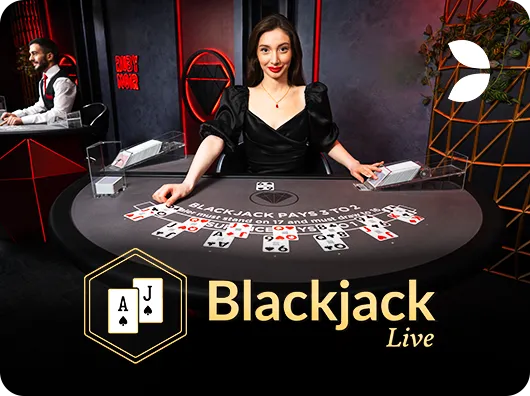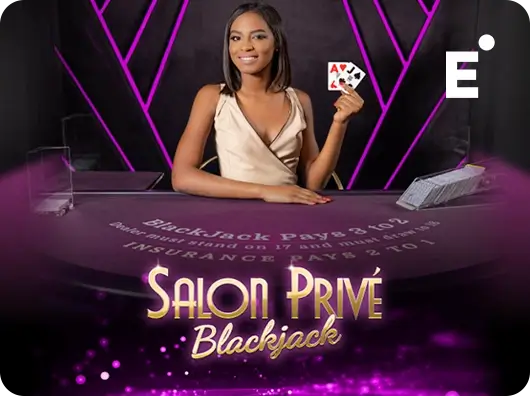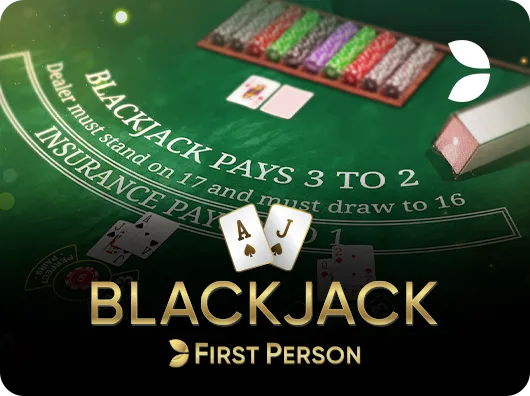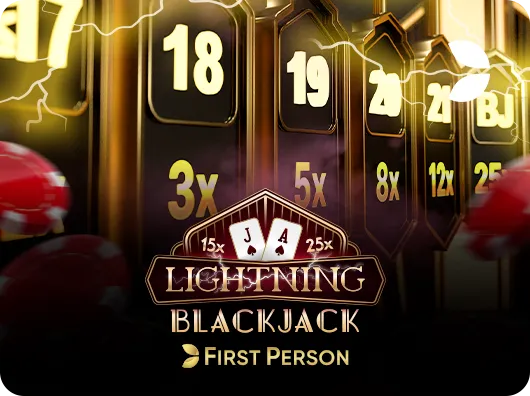Blackjack Rules
Blackjack is the most widely played casino game around the world. Earlier known as Blackjack and Vingt-un, the game utilises a 52-card deck and descends from a global family of casino games called Twenty-One. The game is enjoyed on a semi-circular table accommodating 5, 7, and 12 players. Usually, the seven spots or table that accommodates 7 players is the most common version of this game.
The Blackjack rules are easy to grasp, but the betting options and table rules can differ depending on which variant you are playing. Enjoy the amazing Blackjack game at Fun88 and earn exciting offers and benefits. No need to worry if you are new to online betting; this guide will discuss important factors like Blackjack game rules, objectives, and types of bets.
Blackjack Objective
The primary objective in Blackjack is to outscore the dealer without surpassing 21 points. Unlike other casino games, players compete against the dealer. The ultimate aim in each round is to achieve a hand value higher than the dealer's without going over 21, commonly referred to as "busting." Thus, success is solely determined by beating the dealer's hand.
To ascertain the value of their hand, players assign point values based on their cards, such as:
- Cards numbering from 2 to 10 hold point values corresponding to their numerical value (e.g., 2 equals 2 points).
- Face cards—Jack, Queen, and King—are each valued at 10 points.
- Aces offer flexibility, allowing players to choose between 1 or 11 points.
- A noteworthy combination in Blackjack is an Ace paired with a 10, Jack, Queen, or King, totalling 21 points and earning the term "Blackjack." Achieving a Blackjack assures a strong hand and often leads to favourable outcomes for the player.
General Rules of Blackjack
You don't have to look anywhere forBlackjack rules; this guide is here. Let’s look at various rules of Blackjack before betting.
-
Players Make a Bet with Chips
Before the round begins, players place bets using chips. Players are required to submit their bets before the start of the round.
-
The Dealer Gives a Card to Each Player
The dealer gives each player a card face-up while dealing a card faceown in front of himself. Players can see each other's hands, but the dealer's first card must remain hidden. A standard 52-card deck is used in Blackjack, and before dealing, the dealer removes the Jokers and shuffles the cards for a fair distribution.
-
The Second Card is Handed Out
Like the first round, the dealer gives each player another card face-up. However, this time, the dealer places the other card face-up in their hand while keeping the first one facedown.
-
Player Left to the Dealer Starts Round
For organisation, let the player start each round to the dealer's left, and then the Blackjack game proceeds clockwise.
-
Decide Whether to 'Hit' or 'Stay'
Examine your two cards and add their values—how close is it to 21, and how does it resemble the dealer's hand? If your total is high (like 18 or 19, close to 21), it's wise to "stay" and keep your current hand. If your total is low, such as in the single digits, "hit" to get another card, which could be beneficial.
"Stay" means you don't want an additional card from the dealer, as indicated by holding your hand flat and waving it. Opting to "Hit" signals that you want another card, shown by tapping the game table with your pointer. You can continue to hit until your total reaches or exceeds 21.
-
Each Player Finish Their Turn
Players can review their cards and inform the dealer if they want to hit or stay. Players should be cautious not to hit too frequently, as it can lead to busting—having a card total over 21. If a player busts, they lose the round and their initial bet automatically.
-
Winners are Determined After the Dealer Reveals the Second Card
Now, the dealer shows their hand by turning over the initial card. If the total is 16 or less, the dealer must take another card (hit). If the total is 17 or more, the dealer must stay.
If the dealer gets a Blackjack, all players except those with one automatically lose the round. In that case, it's a push, meaning the player with Blackjack gets their initial bet back. A Push also happens when the player’s hand is similar to the dealer’s.
-
Bets are Paid, and New Round Starts
Players with a hand higher than the dealer's (but not exceeding 21) win the round unless they are busted. Winners receive a payout in a 1:1 ratio.
Other than these, going through the Blackjack Dealer rules,guidelines, and protocols ensures fairness in the game. It also helps to maintain the dealer's neutrality while overseeing tables. A dealer is a trusted party of the casino and overseers who facilitate each round via handing out online bets and dealing with the cards. Thus, properly knowing these blackjack rules assures players winnings in the game.
Suggested Read: Learn How to Play Blackjack Like a Pro
How to Split, Double Down, and Surrender
After understanding the Blackjack game rules, let’s move on to the different types of betting options available in the game. Let's look at a few special gameplay techniques one can apply to win big.
-
Splitting
Splitting divides one hand into two, offering more opportunities to win. When you split, you can bet extra on the new second-hand, matching your initial wager. Splitting occurs when you receive two starting cards of the same rank (like a pair of kings, tens, or sixes). Each hand is then played independently, with its outcome.
Some versions of Blackjack allow multiple splits if you get equal cards again. However, splitting aces comes with restrictions in most variants. When splitting two aces, only one card can be drawn to each new hand. It limits your options for improving your hand through hitting, doubling, or splitting.
-
Doubling Down
You can "double down," doubling your initial wager before the dealer offers you the other card gives you a chance to win more in one go, but you can only receive one additional card. It's a profitable move, especially with a lower hand like an Ace/ 11, where getting a 10-value card would give you a Blackjack.
Touch the table with an extended pointer finger to signal you want to double down. You can opt for a lower amount if you don't want to double your bet. Doubling down is allowed on any hand below 21, comprising split hands. Remember, after doubling down, you can't request additional cards.
-
Surrendering
When you have a weak hand, consider surrendering to the dealer rather than deciding to hit or stay. Surrendering means giving up 50% of your initial bet to prevent a complete loss. To the dealer, on the game table, glide your pointer finger horizontally to signal surrender. Keep in mind that not every casino may allow surrender as an option.
Other Options Available During the Hand
Insurance
Players can opt for a side bet called 'Insurance' when the dealer's first card is an Ace. This bet suggests you believe the dealer has a face-down 10-point card, forming a Blackjack. The insurance bet can be similar to or smaller than your initial bet. If the dealer holds a Blackjack, your initial bet loses (unless you have one), but the side bet pays out at 2 to 1. For instance, a 1-chip side bet would yield 2 chips, totalling 3.
- If the dealer doesn't have a Blackjack, you lose the chips placed on the insurance wager.
Even Money
If you have Blackjack and the dealer shows an Ace, you can choose "even money," a special insurance bet. Opting for even money ensures a 1:1 payout, whether the dealer has a Blackjack or not. If you decline even money, the hand proceeds as usual.
Suggested Read: Know Blackjack Odds & Probability
Common Blackjack Strategies
Here are a few common Blackjack strategies one should apply to improve their game:
- If your hand is 17 or higher, staying in the game is advisable. While hitting could give you an Ace, 2, 3, or 4, the odds of getting a favourable card are not in your favour. Staying is the safer option, increasing the chances that your hand won't be lower than the dealer's and minimising the risk of going over 21.
- Assume the dealer's face-down card is a 10. In a standard deck, 16 out of 52 cards have a value of 10 points (10s, Jacks, Queens, and Kings). While it's not sure that the hidden card is a 10, the odds for it being a 10 are better than any other single card value. For beginners, this blackjack strategy can be reasonable.
- If the dealer's face-up card is 6 or lower, assume they will bust in Blackjack. Dealers are obligated to hit if their hand is less than 16. For instance, if the dealer's first card is a 6 and the next card is a King (worth 10), totalling 16, the rules require them to hit again. However, the likelihood of getting an Ace, 2, 3, or 4 is low compared to other cards. Therefore, assuming that a low first card increases the chances of the dealer busting is safer.
- Avoid betting on insurance. While it might seem like a potential moneymaker, especially if your initial bet doesn't pan out, predicting whether the dealer has a face-down 10 when they reveal an Ace is highly uncertain. Declining insurance bets are recommended when the dealer offers to play it safely.
Blackjack is a casino game that needs more than just luck; there are various tips and strategies one should adapt to before investing money, for detailed strategy you can click here. This write-up has given you information about some general Blackjack dealer rules, a basic outline, and how to implement them in the game.
Splitting, doubling down, and surrendering are some bets you know about now that can help you win big money. Fun88 is your trusted ally in Blackjack gaming with a smooth interface and error-free transaction options. Bet responsibly and have fun!
Frequently Asked Questions (FAQs) on Blackjack Game
What are the basic rules of Blackjack?
The player has to defeat the dealer without going over 21. If you exceed 21, you lose your bet. Achieving a Blackjack (21) triples your bet while beating the dealer without reaching 21, which doubles your bet.
What is the objective of Blackjack?
In Blackjack, the aim is to outscore the dealer without surpassing 21. You win if your hand value is higher than the dealer's without going over 21. Going over 21 is called a "bust."
What is the value of each card?
Face cards such as King, Queen, and Jack have a value of 10. Cards starting from 2 to 10 are valued per their numerical value. Aces count as 11 unless it would exceed 21; then, it's 1.
What are some tips for playing Blackjack?
A few tips for playing Blackjack are that you stand with a hand of 12-16 against a dealer's 2-6, Hit with a hand of 12-16 against a dealer's 7-Ace, and Always split Aces and 8s.
What is the minimum score in Blackjack?
Your initial two cards must have 12 points. If your initial total is less than 12, you must "hit," receiving additional cards until your total is at least 12 but doesn't exceed 21.















